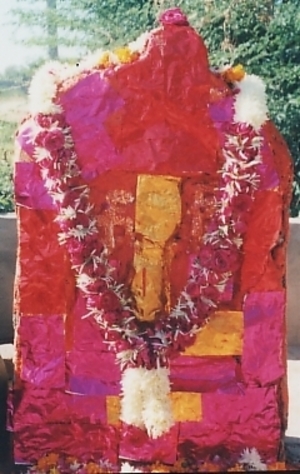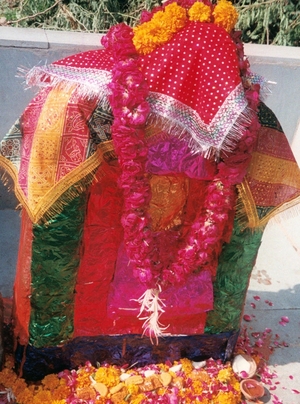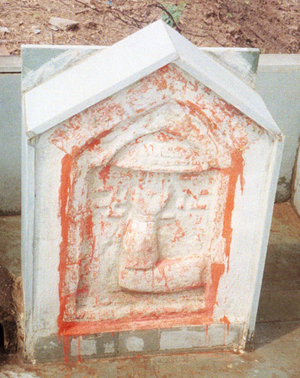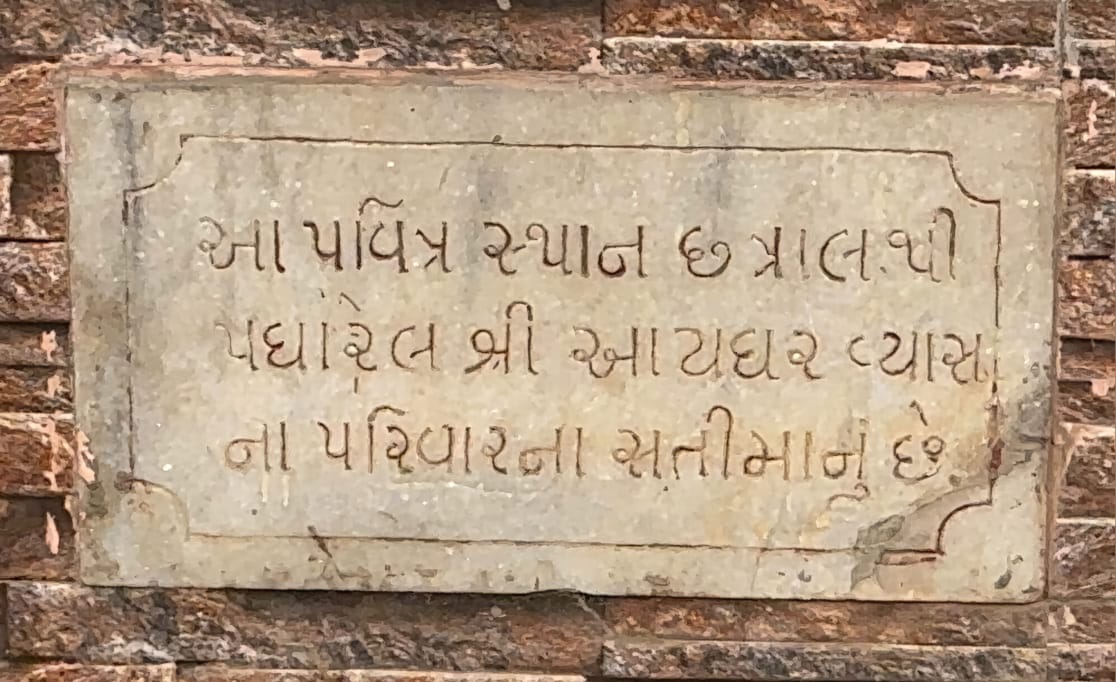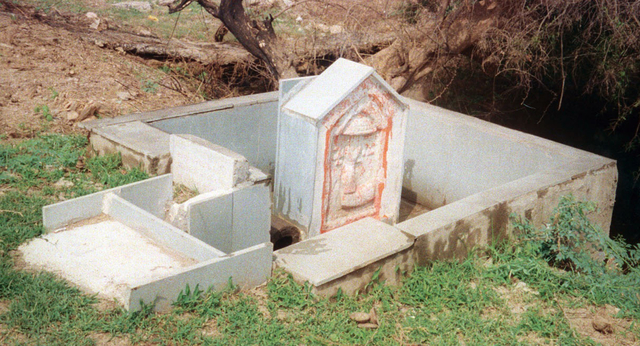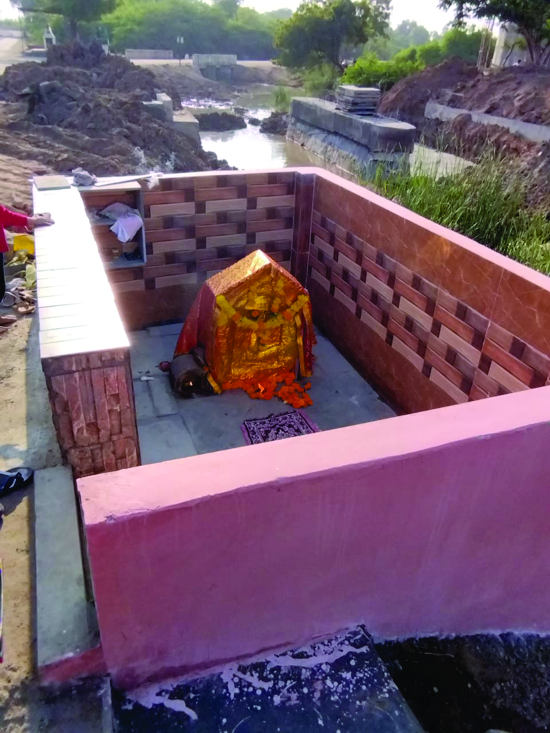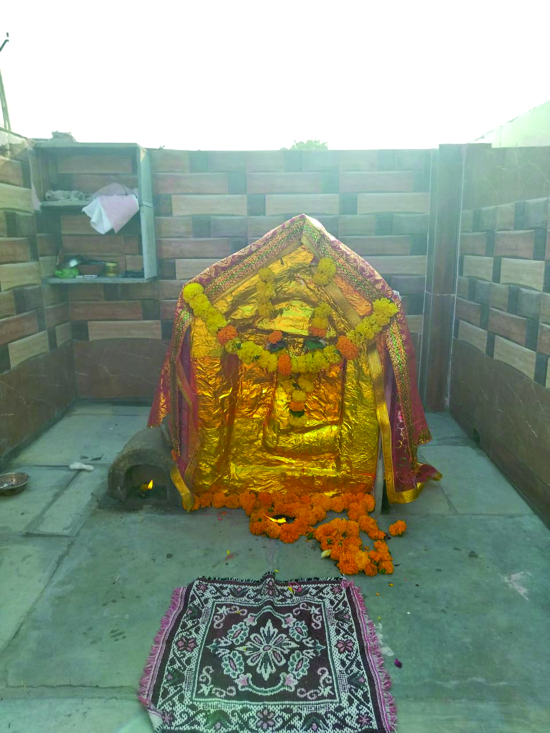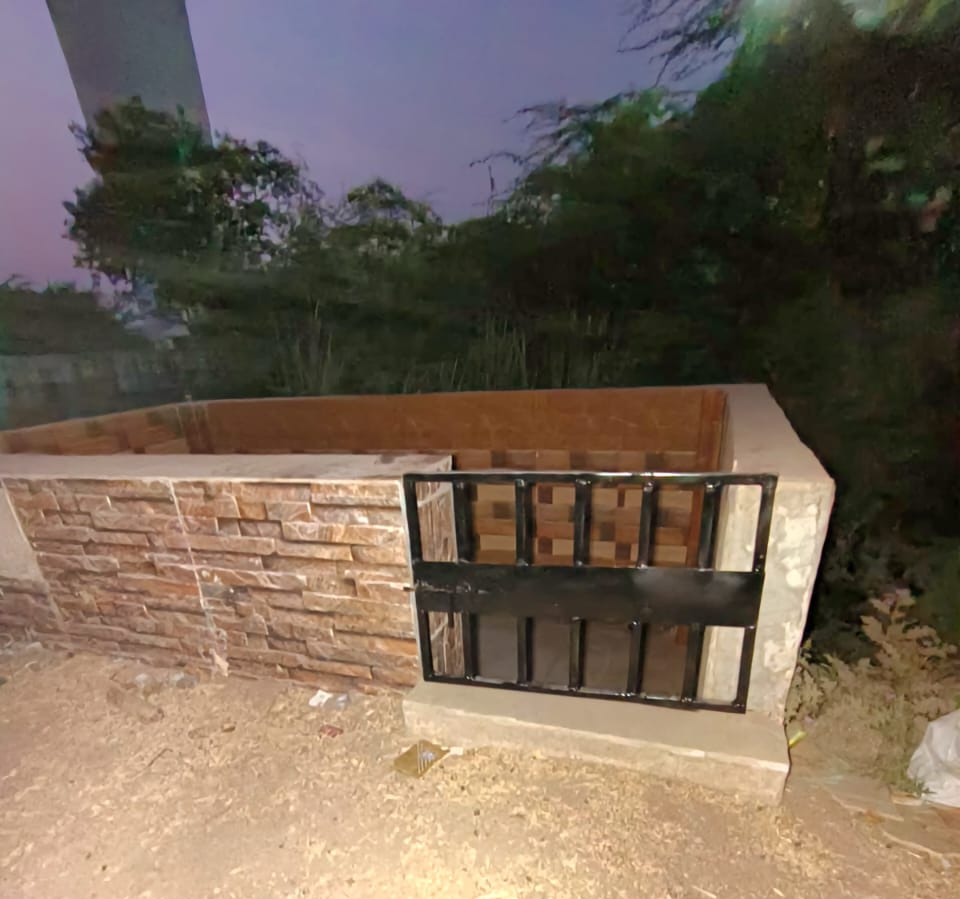
| SATI MAA
Sati Maa - 1
Sati Maa - 2
Sati Maa - 3
Marble Stone Fitted by Dr. Gaurav A. Vyas
Sati Maa - 4
Sati Maa - 5
Sati
Maa - 6
Sati Maa - 7 Sati Maa Video Taken On 28 December 2024
Renovation at Sati Maa's Place :
Here in calculation we have taken age difference from Mahashankar D. vyas till Vadilal M. Vyas of 20 years because during that old period people used to get married soon and from Trambaklal V. Vyas till Dr. Gaurav A. Vyas we have calculated age difference according to the birth date because from that period people used to get married late.
Vadilal
M. Vyas had made a Family tree in which he had written that
Dallaji Migrated to Lakhtar and from there he came to Wadhwan.
The 3 children's of Dallaji namely Rupji, Mahashankar and Ramchandra
in the year 1849 constructed their own houses in Wadhwan.
Present year 2020
Mahashankar Approx. birth period 1834
Now,
2020 - 1834 = 186.
By
this we can say that at present (2020 A.D.) the Vyas family
Satimaa Pillar is Approx. 186 Years old.
To
know more about Atlas cloth Click
here.
Chunri / Veil :
Chunri is veil and used to cover head. It is imporant to know how covering head started and its history.
To know about history of Veil Click here.
The chunri that we see on Sati Maa - 2 image is of red color and Atlas cloth offered to Sati Mass is of green color. Now the main question which comes to our mind is why green and red color?
For this first we need to know the history of Idhar Vyas family which is of Gautam Gotra.
To know the history of Idhar Vyas family Click here.
Color of Chunri / Veil :
In ancient Mesopotamia primarily Green color represents Moon. Moon, joy and peace is represented by Goddess Nana which is a form of a conflation of Sumero-Babylonian Inanna-Ishtar.
Red color primarily represents God An (in Sumerian), later known as Anu or Ilu (in Akkadian), which is the supreme God and "prime mover in creation", embodied by the sky. He is the first and most distant ancestor, theologically conceived as the God of Heaven in its "transcendental obscurity".
Red color also represents Nergal who was associated with the Underworld and is usually the husband of Ereshkigal. He was also associated with forest fires (and identified with the fire-god, Gibil), fevers, plagues, and war. In myths, he causes destruction and devastation.
Conclusion of Chunri and its Color :
When we mix these two colors we get a understanding that Sati is a woman who did self immolation after her husband who became martyr in war.
Moon represents Nana which is a form of Inanna / Ishtar / eve. She is wife of Thor / Indra / adam.
Thor / Indra / Adam is the first King of Aryans. The Hand symbol on Tombstones represents that the Tombstones are of Aryans. The Right Hand on Tombstones shows sun-wise right-hand direction of the Aryan Solar-cult.
To know more about Tombstones / Padya Click here.
To know about relations between Aryavrat (Bharat / India) and Iran (Persia) Click here.
Sati
Maa's Boon to our family :
Sati Maa and Mahashankar Sword :
To know more about Sati Maa and Mahashankar Sword Click Here. |
